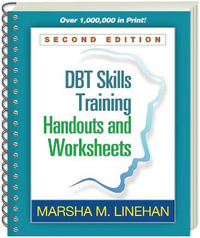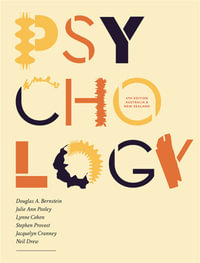J. Guo, E. Lieven, Introduction. Section 1. Language Learning in Crosslinguistic Perspective. N. Budwig, S. Ervin-Tripp, Introduction. J.B. Gleason, B. Phillips, R. Ely, E. Zaretsky, Alligators All Around: The Acquisition of Animal Terms in English and Russian. S. Goldin-Meadow, A. Ozyurek, B. Sancar, C. Mylander, Making Language Around the Globe: A Cross-Linguistic Study of Homesign in the United States, China, and Turkey. A. Kyratzis, "He take one my tools!" vs. "I'm building": Transitivity and the Grammar of Accusing, Commanding, and Perspective-Sharing in Toddler's Peer Disputes. H. Behrens, Direction and Perspective in German Child Language. R.M. Weist, One-to-One Mapping of Temporal and Spatial Relations. A.C. Kuntay, D. Kocbas, Effects of Lexical Items and Construction Types in English and Turkish Character Introductions in Elicited Narrative. K. Demuth, D. Ellis, Revisiting the Acquisition of Sesotho Noun Class Prefixes. P.M. Clancy, Dialogic Priming and the Acquisition of Argument Marking in Korean. Section 2. Narratives and Their Development: Linguistic, Cognitive, and Pragmatic Perspectives. R.A. Berman, Introduction. M. Bamberg, Sequencing Events in Time or Sequencing Events in Storytelling? From Cognition to Discourse--With Frogs Paving the Way. E.L. Bavin, Plot and Evaluation: Warlpiri Children's Frog Stories. R.A. Berman, B. Nir-Sagiv, Clause Packaging in Narratives: A Crosslinguistic Developmental Study. R. Berthele, The Many Ways to Search for a Frog Story: On Fieldworker's Troubles Collecting Spatial Language Data. L. de Leon, Between Frogs and Black Winged-Monkeys: Orality, Evidentials, and Authorship in Tzotzil (Mayan) Children's Narratives. J. Guo, L. Chen, Learning to Express Motion in Narratives by Mandarin-Speaking Children. M. Hickmann, H. Hendriks, C. Champaud, Typological Constraints on Motion in French and English Child Language. K. Nakamura, Language and Affect: Japanese Children's Use of Evaluative Expressions in Narratives. A. Nicolopoulou, Rethinking Character Representation and Its Development in Children's Narratives. K. Oh, Motion Events in English and Korean Fictional Writings and Translations. S. Ozcaliskan, Learning to Talk about Spatial Motion in Language-Specific Ways. E. Veneziano, L. Albert, S. Martin, Learning to Tell a Story of False Belief: A Study of French-Speaking Children. Section 3. Theoretical Perspectives on Language Development, Language Change and Typology. E. Lieven, Introduction. T. Givon, S. Savage Rumbaugh, Can Apes Learn Grammar? A Short Detour into Language Evolution. R.D. Van Valin, Jr., Some Remarks on Universal Grammar. T.G. Bever, The Canonical Form Constraint: Language Acquisition via a General Theory of Learning. W. Klein, Finiteness, Universal Grammar and the Language Faculty. J. Bybee, Grammaticization: Implications for a Theory of Language. E. Sweetser, What Does It Mean to Compare Language and Gesture? Modalities and Contrasts. M. Rispoli, On Paradigms, Principles and Predictions. L. Menn, Child Language, Aphasia, and General Psycholinguistics. L. Talmy, Main Verb Properties and Equipollent Framing. I.I. Antunano, Path Salience in Motion Events. A. Kopecka, Continuity and Change in the Representation of Motion Events in French. W. Sampaio, C. Sinha, V. da Silva Sinha, Mixing and Mapping: Motion, Path and Manner in Amondawa. Section 4. Language and Cognition: Universals and Typological Comparisons. M. Bowerman, Introduction. P. Brown, S.C. Levinson, Language as Mind Tools: Learning How to Think Through Speaking. D. Gentner, M. Bowerman, Why Some Spatial Semantic Categories Are Harder to Learn than Others: The Typological Prevalence Hypothesis. L. Verhoeven, A. Vermeer, Cognitive Predictors of Children's First and Second Language Proficiency. S. Pourcel, Relativistic Application of Thinking for Speaking. S. Stromqvist, K. Holmqvist, R. Andersson, Thinking for Speaking and Channeling of Attention--A Case for Eye-Tracking Research. D. McNeill, Imagery for Speaking. A. Aksu-Koc, Evidentials: An Interface between Linguistic and Conceptual Development. S. Stoll, B. Bickel, How Deep Are Differences in Referential Density? Appendix A. D.I. Slobin, Dan Slobin's Mentors, Models, Influences and Connections: A Self-Portrait (PowerPoint Slides Presented by Dan Slobin at the Special Symposium in His Honor at the 10th International Congress for the Study of Child Language, Berlin, July 2005). Appendix B. Bibliography of Publications by Dan Isaac Slobin.
























